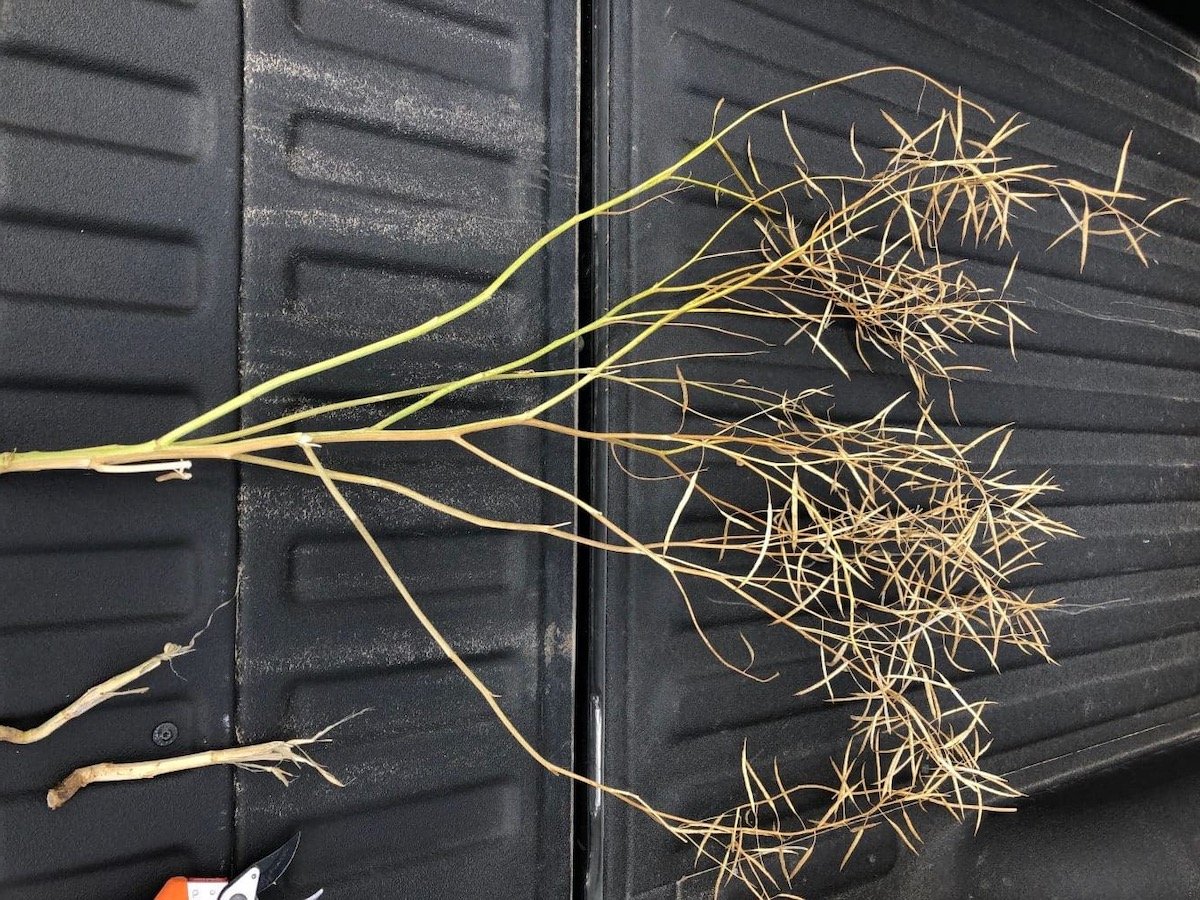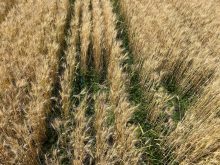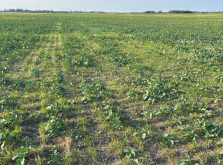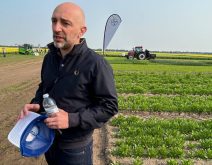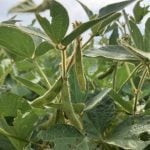Verticillium is a newcomer among Canadian crop diseases, and according to Justine Cornelsen, agronomic and regulatory services manager with BrettYoung Seeds, researchers still have much to learn about it.
“It was first identified on a farm south of Winnipeg in 2014, but it has now been identified in many other production regions,” she says.
As a result, very little is known about the disease.
Read Also

New high-performance forage training program to launch in 2026
A new Canadian Forage and Grasslands Asssociation high-performance forage program will be a resource for farmers, agronomists and others in the forage sector.
Canola yields were down across the Prairies last year. Cornelsen said much of the yield loss has been attributed to heat stress and drought loss in Saskatchewan and to blackleg in Alberta. But poor yields coincided with a severe outbreak of verticillium in Manitoba, and many farmers and agronomists think the soil-borne disease might be the issue.
Cornelsen says it’s hard to pin down exactly how verticillium affects yield, though.
“There’s nothing to really validate whether those were the primary losses — just anecdotes and field evidence,” she said. “When we look to yield losses for verticillium, we don’t have a good answer.”
The problem is, because it’s so new, very little research has been done in Canada.
“It’s probably only been the last five years that this disease has been taken seriously, where there’s been investment into research and a more focused effort,” she says.
Since research projects can take up to five years, and 2020 was basically a write-off because of COVID, in many cases we’re only seeing the very earliest results from that research now.
While the disease is new to Canada, the brassica-loving species verticillium longisporum that was discovered here in 2014 was first discovered in Germany on horseradish in 1960. Naturally, the hope for Canadian plant pathologists was that they could glean something from European research to help deal with the disease. Unfortunately, the Europeans have been little help.
“They actually kind of try to spin it as a positive,” Cornelsen says. “It’s a kind of a natural drydown product for them, thought to help with harvestability.”
Because it’s a soil-borne disease, fungicides won’t be effective. For the same reason, crop rotation, the go-to for any integrated pest management approach, isn’t all that effective because canola is everywhere, and the disease is wind-borne.
“It’s tough to provide any sort of management practices, but we are working on it,” she says.

A lot of the hope and expectation is for some kind of silver bullet from plant breeders to develop resistant hybrids. Again, though, because the research is in the nascent stage, there are several challenges.
“We’re starting from ground zero, working with this disease,” Cornelsen says. “We have no standardized disease severity scale.”
Companies and researchers are currently using different systems to assess the disease, which complicates field testing, she says. Without a standardized scale, the results can vary depending on disease severity in different locations.
There is also still a poor understanding of how plants defend themselves against the disease — and which specific traits are responsible for these defences.
“My concern is when we come to the marketable product, there’s no consistency in the messaging,” Cornelsen says.
However, she notes, there are some promising products available on the market that show some level of tolerance to verticillium stripe. And again, the ratings for these products can differ widely because companies are at different stages of research and testing.
She emphasizes developing reliable resistant hybrids is a lengthy and complex process and it takes at least six years of research and field trials before a new hybrid can be released for seed production.
Besides, she adds, rushing something to market isn’t always the best idea. She pointed to clubroot. It was discovered in 2003, and within six or seven years, new resistant hybrids came on the market — but within four years, those hybrids were overcome.
“We don’t want to run to the marketplace and not have these issues ironed out,” Cornelsen says. “We want to provide a product that’s going to have some longevity and help solve our answers to verticillium.”
In the meantime, farmers are being asked to go back to the basics.
READ MORE: Don’t be a silly one, scout for verticillium
Breanna Miller-Friesen, an agronomy specialist with the Canola Council of Canada, says as the science is evolving, farmers should implement a strong crop rotation plan, ideally with a three- to four-year rotation to help reduce the buildup of spores in the soil.
“It’s not perfect, but it does potentially help us,” she says.
Miller-Friesen also emphasized the importance of minimizing soil movement. Practices such as no-till farming may not always be feasible depending on soil types, particularly in Manitoba, but reducing unnecessary passes through the field can help prevent the movement of microsclerotia deeper into the soil, where it can remain viable.
Maintaining overall plant health through integrated pest management (IPM) is another key recommendation. This approach focuses on managing all farm diseases collectively, rather than focusing on one issue at a time.
“We are really stressing overall plant health and trying to take full management of other diseases on a farm,” Miller-Friesen says, adding that plants that are already weakened or struggling are more susceptible to verticillium. “They’re infected earlier, they’re shut down sooner, and they’re seeing a bigger yield drop.”
Manitoba agronomists are noticing a relationship between blackleg and verticillium, Miller-Friesen adds. The relationship is not yet well understood — and whether one drives the other is still being explored.
For farmers, it’s really about controlling what is within their power to control.

Along those lines, Cornelsen says straight-cutting, rather than swathing canola, could exacerbate the situation. When canola is straight cut, the pathogen can continue to spread up the stem, causing more infection. The longer those straight-cut acres are left on the field, the more time the pathogen has to colonize and spread.
“If you cut it right through the inoculum source, it’s going to spread over the combine,” she said. “It’s going to go up into the wind. It’s going to blow to your neighbour’s field and cover your entire field.”
Miller-Friesen is confident that new management practices will emerge in the coming years. While challenging, she believes the disease is manageable — it’s just still early in the research cycle.
She is part of the Verticillium Steering Committee, a group that consists of current researchers working on verticillium projects, life science companies working with canola breeding, provincial disease specialists, pathologists and provincial canola grower groups (Manitoba Canola Growers, SaskOilseeds, Alberta Canola).
“We are getting together a couple of times a year to discuss findings from the past season and trying to work on some management practices going forward,” Miller-Friesen says.
Cornelsen, who’s also on the steering committee, says the fact that farmers need more clarity and direction on how they should manage the disease is crystal-clear.
“We know where verticillium is here. It’s widespread; it’s not going anywhere, and we need other management practices to support it,” she says. “The research is happening, and hopefully within another couple of years, we’ll have clear answers.”


